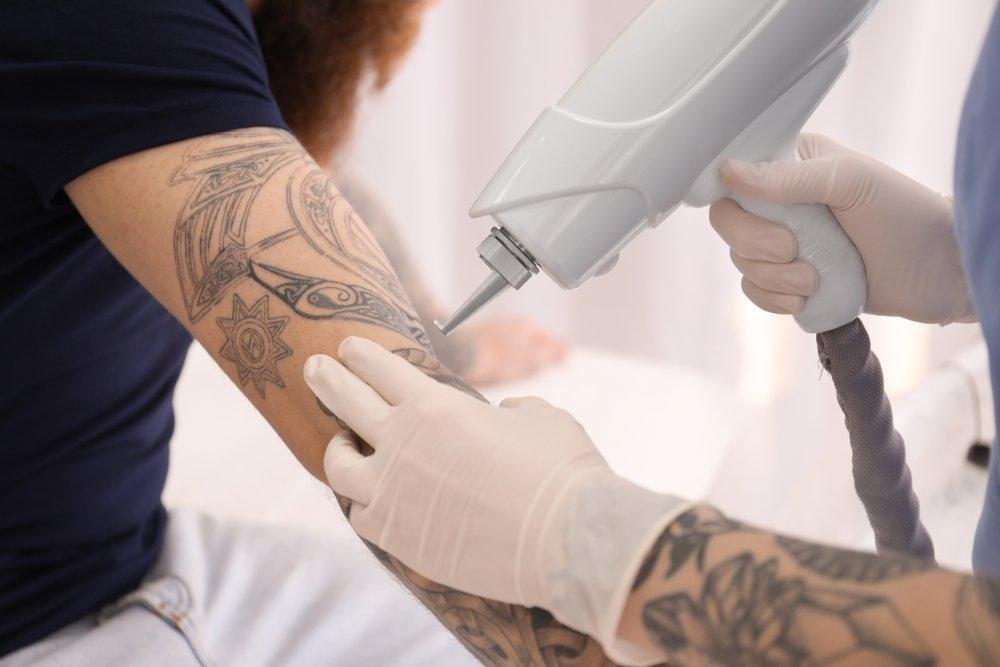-
Новости
- ИССЛЕДОВАТЬ
-
Статьи пользователей
How Age of Tattoo Affects Removal Success in Islamabad

Tattoos are a popular form of personal expression, but over time, individuals may choose to remove them for aesthetic, professional, or personal reasons. If you are considering tattoo removal in Islamabad, one key factor that can significantly influence the outcome is the age of the tattoo. Understanding how the age of a tattoo impacts removal success can help patients set realistic expectations and plan their treatment effectively.
1. The Basics of Tattoo Aging
A tattoo consists of ink particles deposited in the dermis, the skin’s middle layer. Over time, the body’s natural immune processes gradually break down some of the ink, causing older tattoos to fade. Several factors contribute to this fading, including sun exposure, skin type, ink quality, and lifestyle habits.
Older tattoos tend to be lighter and less dense than newly applied ones, which can affect how they respond to removal methods such as laser treatment. In Islamabad, dermatology clinics often assess the age of a tattoo during consultation to determine the most suitable removal strategy.
2. How Tattoo Age Influences Removal Techniques
Laser tattoo removal is the most common and effective method available in Islamabad. The process works by directing concentrated pulses of light at the tattooed area to break down ink particles, which are then cleared naturally by the body’s immune system.
Older tattoos, which have already faded over time, typically respond better to laser treatment because the ink is less concentrated and more dispersed within the skin. As a result, fewer laser sessions may be needed to achieve complete removal. In contrast, newer tattoos, with fresh and dense ink, often require more sessions to break down the pigment effectively.
3. Color and Composition of Older vs. Newer Tattoos
The age of a tattoo can also influence the colors and composition of the ink. Older tattoos may show signs of fading unevenly, with some areas lighter than others. This irregularity can make the removal process slightly more challenging but also allows lasers to target residual pigment more efficiently.
New tattoos, especially those applied with high-quality inks, may contain vibrant, dense colors that absorb laser energy differently. Dark colors like black and dark blue are generally easier to remove regardless of age, while lighter colors such as yellow, green, or white are more difficult and may require advanced laser technologies available in specialized clinics in Islamabad.
4. Number of Sessions Required
The age of a tattoo is one of the primary factors influencing the number of sessions required for complete removal. Older tattoos often need fewer sessions because the ink has naturally faded and is more easily fragmented by laser treatment.
For newly applied tattoos, removal may be more time-consuming. Fresh ink particles are densely packed and more resistant to laser energy, which may necessitate multiple sessions spaced several weeks apart. In Islamabad, dermatologists typically recommend a waiting period of at least six months after getting a new tattoo before beginning removal to ensure the ink has settled and the skin has healed fully.
5. Skin Healing and Recovery
Older tattoos may also heal faster after laser treatment because the skin has already adapted to the presence of ink. In contrast, newer tattoos might involve more trauma to the skin during removal, increasing the likelihood of temporary redness, swelling, or mild blistering. Proper post-treatment care, including keeping the area clean, applying recommended ointments, and avoiding direct sun exposure, is essential to promote healing and prevent complications.
6. Consulting a Professional in Islamabad
A professional consultation is essential to assess the age, size, color, and location of the tattoo. Experienced dermatologists in Islamabad use this evaluation to develop a customized removal plan, estimate the number of sessions, and explain the expected outcomes. Clinics with advanced laser technology can also adjust settings based on tattoo age and skin type to maximize safety and effectiveness.
During consultation, patients should discuss any previous attempts at tattoo removal, as older tattoos with partial removal or fading may require a different approach than untouched tattoos. Understanding these factors ensures realistic expectations and a smoother removal process.
7. Additional Considerations
While tattoo age is a significant factor, it works in conjunction with other considerations such as skin type, tattoo placement, ink quality, and overall health. Older tattoos on areas with thinner skin may still require careful handling, and darker skin tones may need specialized laser settings to minimize the risk of pigmentation changes.
Conclusion
The age of a tattoo plays a crucial role in determining the success of removal in Islamabad. Older tattoos generally respond more favorably to laser treatments due to fading and reduced ink density, requiring fewer sessions and allowing for more predictable results. In contrast, newer tattoos may require more sessions and careful handling due to dense ink and potential skin sensitivity.
Consulting a qualified dermatologist or laser specialist in Islamabad ensures that tattoo removal is performed safely and effectively, with personalized treatment plans tailored to the tattoo’s age, color, and complexity. By understanding how tattoo age affects removal success, patients can approach the process with confidence, set realistic expectations, and achieve the best possible outcome.






